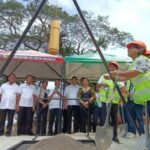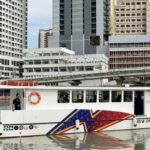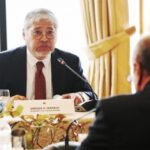MANILA – Over 5,400 individuals affected by the powerful earthquakes that struck the Davao Region last week will receive emergency employment through the government’s Department of Labor and Employment (DOLE).
A total of 5,450 people will benefit from the Tulong Panghanapbuhay sa Ating Disadvantaged/Displaced Workers (TUPAD) program, with an allocation exceeding PHP28 million across the region.
Approximately 4,950 beneficiaries are from Davao Oriental, while the remaining 500 come from Davao City, Davao de Oro, Davao del Norte, Davao del Sur, and Davao Occidental.
Included in the PHP28 million fund is PHP2.5 million designated for beneficiaries in other parts of the region.
The majority of beneficiaries will come from the municipality of Manay, the area hardest hit by the recent tremors.
They will participate in debris segregation, materials recovery, stockpiling, clearing operations, and waste management activities in affected areas.
The emergency employment program will run for 10 days starting October 13.
The allocated amount includes micro-insurance coverage for all beneficiaries to ensure their safety and protection while performing rehabilitation-related tasks.
The agency reaffirmed its commitment to providing immediate support to displaced workers through emergency employment.
“Through TUPAD, we aim to help workers rebuild their lives by providing temporary income and livelihood while contributing to the restoration of their communities,” the statement said.
On October 10, two earthquakes, recorded at magnitudes 7.6 and 6.8, occurred with their epicenter traced to Manay town, severely impacting several other municipalities and displacing thousands of families.
The provincial government of Davao Oriental reported 70,142 affected families across the province, with the highest numbers in the municipalities of Governor Generoso, Banaybanay, and Manay.
Davao Region
The Davao Region, located in southeastern Mindanao, is a culturally diverse area historically inhabited by various indigenous groups like the Bagobo and Mandaya. Its modern development was heavily influenced by Japanese migrants in the early 20th century, who established extensive abaca plantations. Today, it is a major economic hub known for its agricultural exports and as the home of Mount Apo, the Philippines’ highest peak.
Davao Oriental
Davao Oriental is a province in the southeastern part of Mindanao, Philippines, known for its stunning natural landscapes, including the UNESCO-listed Mount Hamiguitan Range Wildlife Sanctuary. Historically, the area was home to various indigenous groups like the Mandaya, known for their intricate crafts and rich cultural traditions. The province’s modern history was significantly shaped in 1967 when it was officially created by separating from the larger Davao Province.
Davao City
Davao City is a major urban center in the southern Philippines and the de facto capital of Mindanao. Historically, it was home to indigenous groups like the Bagobo and was later developed as a key agricultural hub under Japanese and American influences in the early 20th century. Today, it is a bustling metropolis renowned for its strict governance, proximity to Mount Apo, and as the “Durian Capital” of the Philippines.
Davao de Oro
Davao de Oro is a province located in the Philippines’ Mindanao region, established in 1998 after being carved out from the former Davao del Norte. Historically, its economy has been driven by agriculture and mining, particularly gold and copper. The province is known for its natural attractions, including mountains and waterfalls, and its name, which means “Gold of Davao,” reflects its significant mineral wealth.
Davao del Norte
Davao del Norte is a province in the southern Philippines, on the island of Mindanao. Historically, its lands were home to indigenous groups like the Mansaka, and it was significantly developed through the establishment of large-scale banana plantations in the 20th century. Today, it is a major economic hub known as the “Banana Capital of the Philippines.”
Davao del Sur
Davao del Sur is a province in the Philippines located on the island of Mindanao, known for its majestic Mount Apo, the country’s highest peak. Historically, the area was home to various indigenous groups like the Bagobo-Tagabawa before becoming a significant administrative region under both American colonial rule and later an independent Philippine republic. Today, it is a key economic and agricultural hub, famous for its vast fruit plantations, particularly durian.
Davao Occidental
Davao Occidental is the youngest province in the Davao Region of the Philippines, officially established in 2013 after being carved out from Davao del Sur. Its history is deeply tied to the indigenous Bagobo-Tagabawa and B’laan peoples. The province is known for its pristine ecotourism destinations, including the vast Sarangani Bay and the remote Balut Island.
Manay
I am unable to provide a summary for “Manay” as I cannot confidently identify a specific, well-known place or cultural site by that name. It could refer to a municipality in the Philippines, a surname, or another lesser-known location. To give an accurate summary, I would need more specific context.






